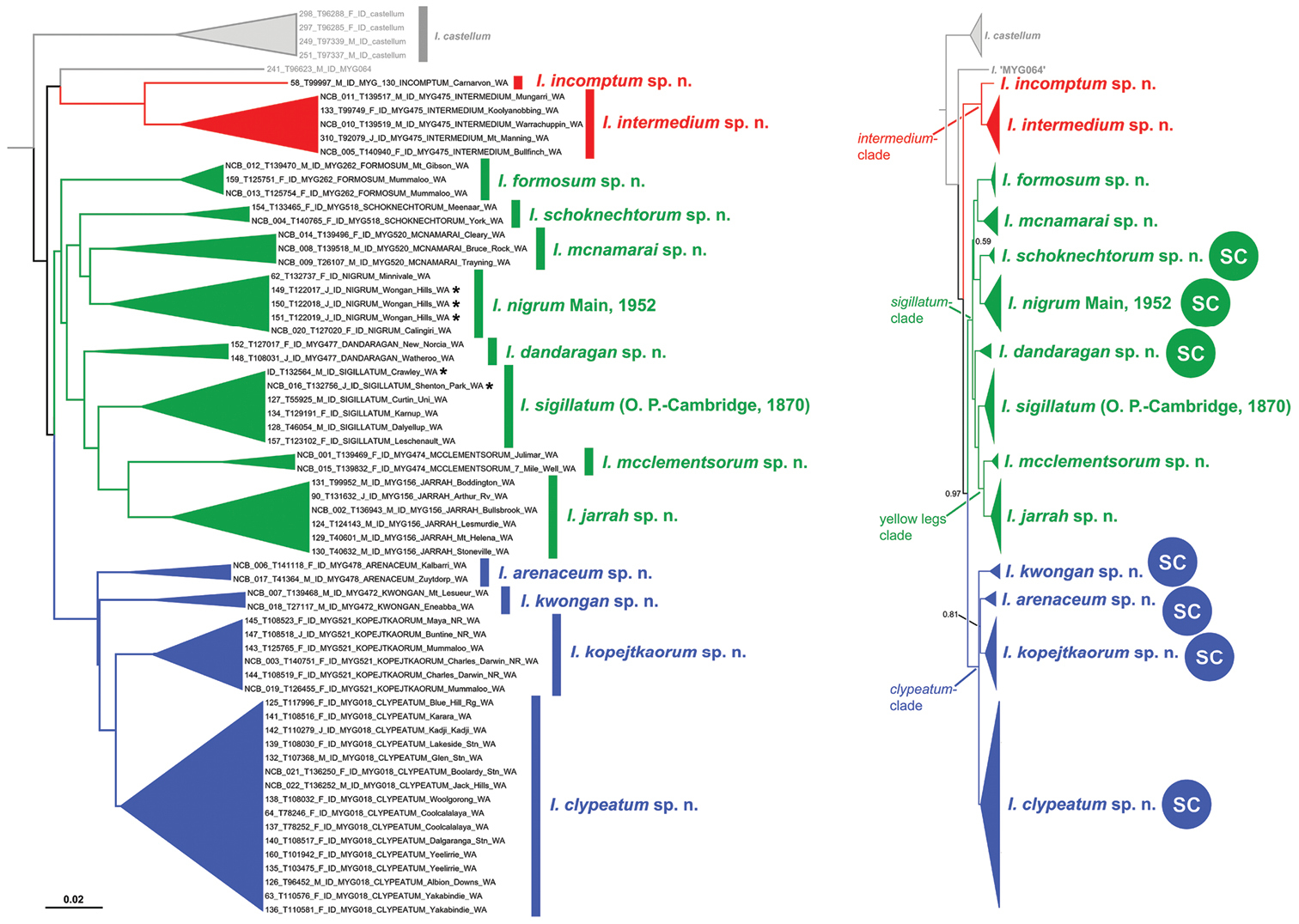
|
||
|
Tamura-Nei neighbour-joining tree of the COI dataset (at left) and Bayesian 50% majority-rule consensus tree resulting from a partitioned phylogenetic analysis of the 7 gene FULL dataset (at right) (both datasets with 82 taxa; most outgroups removed for ease of presentation). Shield-backed trapdoor spiders of the Idiosoma nigrum-group are coloured according to clade designations (with closely related outgroups in pale grey), and specimens of I. nigrum and I. sigillatum from their respective type localities are highlighted (*). Seven species with highly sigillate (sclerotised) abdomens in the polyphyletic ‘sigillate complex’ are denoted by circular ‘SC’ icons on the FULL dataset tree. Congruent species lineages that are concordant with morphological species concepts are collapsed on both trees, and posterior probabilities < 0.99 are shown adjacent to nodes on the FULL dataset tree (all other nodes have a posterior probability of 0.99–1.0). Note the erroneous position of 241_T99623 in the COI dataset tree; this species (‘MYG064’) is a close sister-lineage to the nigrum-group (as per the FULL dataset tree), and does not possess the morphological synapomorphies characteristic of other nigrum-group taxa. Note also that sequences were not available for I. corrugatum sp. n. (incertae sedis), I. gardneri sp. n. (sigillatum-clade) or I. gutharuka sp. n. (intermedium-clade). |